Free Stained Glass Patterns and Tips for Making Your Own!
- Paul Urteaga
- Sep 7, 2023
- 8 min read
Updated: 5 days ago
Free stained glass patterns a the end of this post
In this guide on free stained glass patterns and tips for creating your own, I want to emphasize that the technique(s) I'm sharing here are meant for instructional purposes only and are not the only approach. There are numerous ways to accomplish these tasks, but I have personally found this method to be the most effective for myself and my students. Once you've learned this technique, I encourage you to explore other methods and choose the one that suits you best. It's important to remember that while some individuals may criticize our efforts to provide this information, it's ultimately about embracing the artistic process and making it your own.

Before you continue reading, I want to let you know at the end of this article, there is a list of free patterns for you to consider. You are free to download, share, or add to your collection - they are for you! Also, check out our stained glass clothing line.
OK! In this post I will be walking you through the first steps creating a stained glass pattern for your first copper foil method project. If you have always admired stained glass and longed to create your own masterpieces, you've come to the right place. This guide will take you through the beginning process of selecting a stained glass starter pattern, cutting it out, and transferring it onto glass. As a beginner, it might seem like a tall order. But don't worry, with a bit of patience and practice, you'll be creating stunning stained glass art in no time. Tools!! What about tools? At ease, young glass artist to-be! I will address the necessary tools needed in a future post. For now, we are just focusing on a basic pre-drawn pattern.
Remember, like any new skill, creating stained glass requires patience and practice. The same applies with selecting patterns. You will not become a master overnight, but with each piece you create, you'll discover more about this wonderful craft and about yourself. So, let us get started!
Section 1: Selecting Your Stained Glass Pattern
Now, let's break down the stained glass making process into steps. We will start a basic pre-drawn pattern, then we will move on to cutting the pattern, and finally, we will transfer the pattern onto glass. Each step is crucial and contributes to the final artwork's beauty and integrity. I have a handful of basic pattern ideas on Pinterest at Caveman Glassworks - Pattern Ideas.
In a basic pattern, try to stay under 30 pieces. Anything more as a beginner can become overwhelming and cause second-guessing on whether you are suited for this hobby – It is a common thought amongst newbies.
In this discussion, I am using a lighthouse pattern created by Spectrum Glass. For the purpose of instruction, this pattern measures eight inches wide thirteen inches tall (8”x13”). Why so small? Because it can be printed on a printer if you do not have access to a copy center. If you choose to make the pattern larger, please note your measurements. Print at least TWO copies of your pattern.

Most all patterns will be just lines; therefore, I have selected a color-filled pattern for visual purposes to streamline the glass selection process in a section to follow.
As a beginner it is wise to select patterns with the least number of sharp curves as possible. The reason is that glass tends to break in a straight line. Cutting curves is possible with other tools needed for this hobby and I will be cover these in another post. Ok, let us talk about glass first and then onto the lighthouse pattern creation.
Section 2: Choosing Glass Colors
You can purchase stained glass pieces online, a local Hobby Lobby, or a stained glass store near you. Now, referring to our lighthouse pattern example, look at your pattern and count the number of pieces. In this pattern, there are 30 pattern pieces. Although we can get creative with this pattern, I recommend starting with simple geometric patterns. They typically have larger pieces and straight lines, making them easier to cut and assemble. Think of squares, triangles, and rectangles arranged in a pleasing design. Our goal is to keep it simple.
Note that the pieces are labeled with letters, numbers, and arrows. The letters in the labels indicate different colors of glass selected by you to be used in your project. The numbers indicate the placement the pieces in your pattern, and the arrows indicate the grain direction of your glass – this makes sense later – believe me grasshopper! Let us consider our glass colors by letter based on this pattern:
Letter A:
The color of sky – will you choose a very light blue for a morning look, medium to dark blue for mid-day or evening? The choice is yours.
Letter B:
Will you choose another blue color or maybe choose white or off-color white for clouds?
Letters C & D:
The example shows black and white colors. Choose the color(s) you prefer – this is your project. For Letters E through H: The same applies with the Letter C & D instructions
Take note on the grain direction on your pattern. For example, we will use Pieces E1, E2, and E3.
a. For E1 and E2, consider having the grain of the glass sloping down at a 45 degree angle to create a sloping effect.
b. For E3, consider the grain of the glass flowing from left to right.
c. There is NO RIGHT OR WRONG! This is your pattern therefore, you choose how you would like it to look.
Section 3: Creating Pattern Pieces
Before beginning this section, I must ask…. Did you print TWO COPIES of your pattern? If not, stop here and do so now Grasshopper.
In this section you will need to the following items:
1. Two copies of your pattern
2. Carbon Tracing Paper
3. Roll of Scotch Tape
4. Semigloss sticky / adhesive backed paper 8 ½” x 11” (Why semigloss? It will repel the water slightly better than non-coated adhesive paper when grinding your glass)
5. No. 2 Pencil
6. Pattern sheers or a sharp pair of scissors.
The shears remove just the right amount space between the pattern pieces allowing for the thickness of the lead solder and ensures a better fit for your stained glass pieces. If you do not have pattern sheers, that’s ok, we will address that in the Glass Grinding section.

Pattern Tracing:
We will proceed in this order: Sticky backed paper, carbon paper, and pattern.
1. Start off with placing your sticky backed adhesive paper on a flat surface and tape each corner to the surface – make sure it is flat.
a. If your pattern is larger than just one sheet of adhesive paper, it is ok to slightly overlap another sheet of sticky backed paper. Be sure to tape the entire length of your overlapping pieces together, both front and back.
2. Lay your carbon paper on top of your sticky backed paper to cover the entire surface, leaving about ¼” of sticky backed paper exposed on all sides. Now tape all corners of the carbon and sticky backed paper to your surface.
a. If you need to join additional pieces of carbon paper, use very small pieces of tape to “tac” the carbon pieces of paper together. Doing so will allow you to separate the carbon paper for later use.
3. Finally, place your pattern on top of your carbon paper so that the carbon paper beneath reaches beyond your pattern borders. Tape the corners of your pattern to adhere to the carbon paper, sticky backed paper, and your surface so it will not move.
4. Using your No. 2 pencil, trace the pattern with enough pressure to transfer your design onto the sticky backed paper. Make sure to include the labels for each piece along with the arrows for your grain direction as noted in Section 2:4
Cutting Pattern Pieces:
With your entire pattern traced along with labels and arrows, carefully separate the layers of your pattern platform. Be sure to save your carbon paper for later, it will withstand many uses.
Now with your original pattern and carbon paper set aside, let’s begin to cut the pattern you have just traced onto your sticky backed paper. Using your pattern sheers mentioned in Section 3:6, begin cutting along your pattern lines. The pattern sheers have a very narrow channel and as you cut along your pattern lines, these sheers not only separate your pieces but also remove a very narrow strip between pattern pieces. This creates a gap between the pieces to help them fit better in your project. We will get to this in an upcoming post regarding Scoring and Breaking Glass.
Once all your pattern pieces are cut, separate them by letter and refer to your original pattern to make sure all are accounted for. Once confirmed, it is time to stick these pieces to your glass.
Adhering Pattern Pieces to Glass:
As a beginner, you will want to work on one glass color at a time. Most stained glass sheets have a very shiny side and dull side. You will want to attach your pattern pieces to the shiny side.
In reference to Section 2:4, this is where the arrows on your pattern pieces come into play. Let us use the same example Pieces E1, E2, and E3 in the picture below.

Most glass pieces are sold in either a square or rectangle shape, therefore use this to your advantage. Peeling the back off of E1, attach it to the edge of your glass with the arrow following in the direction of your glass grain. Repeat with Pieces E2 and E3.
In the picture below, you will notice the pattern pieces are very close to one another while others are not. This glass artist is slightly advanced due to the closeness of bird pattern pieces on the white glass and the lack of arrows on the pattern. Again, glass tends to break in a straight line however, the more you practice, the better at scoring and breaking you will become. Looking at the aqua colored pieces in this picture, you will notice the larger gaps in the placement of the pattern pieces (B9 and B12). This is the type of placement we are looking for. It will help you when it comes to scoring and breaking your glass.

Now that we have made it this far, you can finish adhering the rest of your pattern pieces according to their color and grain direction.
There you have it; you have completed a huge step into becoming a glass artist. Remember, the journey of creating stained glass art is just as rewarding as the beautiful end product. Every step, from selecting your pattern, tracing, cutting it out, and transferring it onto glass, is a meditative process that allows you to express yourself creatively.
DO NOT be disheartened if things do not turn out perfect the first time around. Practice, patience, and persistence are your best friends on this journey.
Happy crafting grasshopper!
FREE STAINED GLASS BEGINNER PATTERNS BELOW

Free Stained Glass Patterns
As mentioned above, you are free to download, share, or add to your collection - they are for you! Click on any image to expand the view, right-click on your mouse, and save.
We're greatful for your visit and hope you'll take some time to check out more of our articles. Until next time - Press on Friends!!!
Looking for more information and topics? Select an article below
Recent articles by Caveman Glassworks in no particular order:















































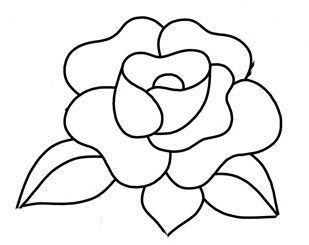

























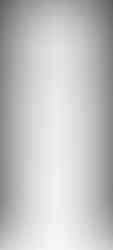



























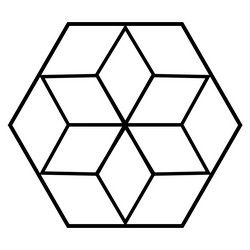























































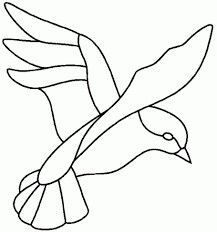































































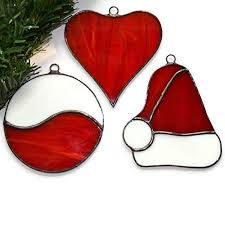

















































































Comments